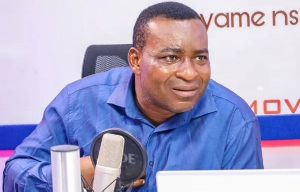Government’s reliance on donors to provide 82 percent of monies allocated to water and sanitation next year leaves this crucial sector in the hands of foreigners, says the Aid Effectiveness Forum -- an umbrella-body of civil society networks working on aid and development effectiveness issues.
For the implementation of various water and sanitation projects, the 2014 budget announced that “an amount of GH¢531,389,023 has been allocated.”
The budget also gave the breakdown as GH¢89,718,844 coming from Government of Ghana (GOG), GH¢6,023,120 as Internally Generated Funds (IGF) from sector agencies, and a whopping GH¢435,647,058 as the contribution of Donor Partners (DPs).
At a time when many Ghanaians are grappling with lack of potable water and good sanitation, and when donor funding has been mired in undue delays, the forum said the objectives for the sector may well not be realised.
The Aid Effectiveness Forum noted at a budget workshop in Accra that the allocation to the sector is “woefully inadequate”, more so when most of it has been left in the hands of donors.
“If 82% of the allocation to the sector is through donor funding, the issue is that the provision of potable water to Ghanaians has been left in the hands of foreigners,” Ben Lartey, the Southern Zonal Coordinator of the Coalition of NGOs in the Water and Sanitation Sector, told the B&FT.
“Government has come up with a very wise decision on an infrastructure fund. Can we not allocate a portion of it to the water and sanitation sector?” he asked.
The forum’s monitoring of water and sanitation in 2013 indicates a shortfall in water supply to rural and urban areas in Ghana.
Per the Ghana Urban Water Company Limited’s (GUWCL) March 2013 publication, the company produces 682,160 cubic metres of water per day.
However, the demand for water by the populace stands at 1,076,526 cubic metres, creating a deficit of 394,336 (about 40%) for which the GUWCL needs about US$2billion over the next decade to close.
Government insists, however, that it has increased “the percentage of urban dwellers who have access to safe, adequate and affordable water from 63 percent in 2012 to 68 percent in 2013”.
For rural dwellers, the budget said “the Community Water and Sanitation Agency continued with the provision of potable water to rural communities from 63.4 percent in 2012 to 70 percent in 2013” through the implementation of a number of projects.
However, the Coalition of NGOs in the Water and Sanitation Sectors is sceptical about these statistics. Mr. Lartey wondered: “If we had achieved 68 percent urban water coverage, would the Adenta, Osu, Teshie and the Nungua people, and the people in Kumasi, Tamale and all those areas not have water?”
Meanwhile, only 600 out of a targetted 1,200 boreholes have been drilled under the Sustainable Rural Water and Sanitation Project aimed at improving access to water and sanitation for 600,000 people in 66 districts of Upper West, Upper East, Northern, Brong Ahafo, Central and Western Regions.
Business News of Friday, 13 December 2013
Source: B&FT













